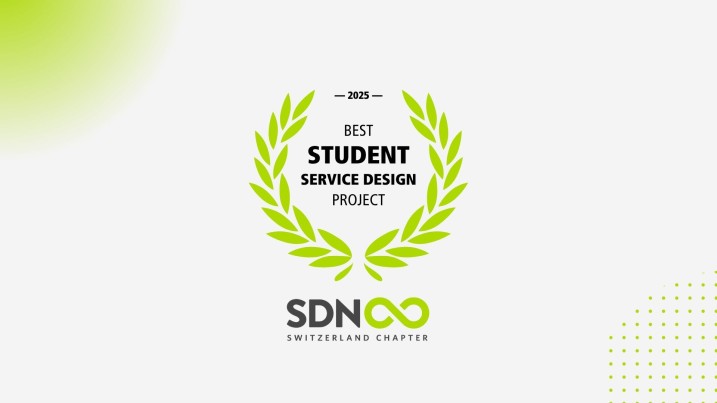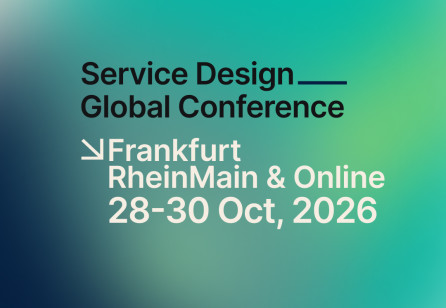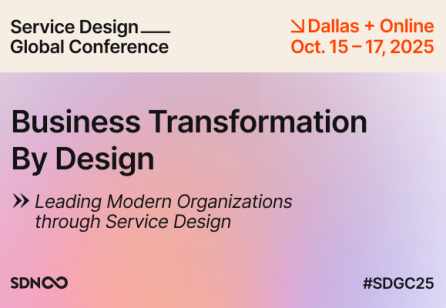Exploring Paths to Mental Health Through Mountain Trails by Tetyana Kalyuzhna
Harnessing Nature and Reflection for Sustainable Emotional Growth
See project poster
Why is your project a good example of Service Design work?
This project transforms hiking trails into a playful, analog service for emotional resilience. Through kits, maps, and sensory exercises tested in real workshops, it invites users to reflect, play, and grow. Designed for diverse users, co-created the service experience based on users needs during the "walkshops", it connects mental well-being, local landscapes, and quiet rituals of self-care. Rooted in co-creation and systems thinking, it’s a low-tech, inclusive, and scalable service — turning nature into a soft, supportive space for inner work.
About Tetyana
I’m Tetyana, a visual designer from Ukraine with a background in book illustration. For the past three years, I’ve focused on graphic and service design. I study part-time at Hochschule Luzern while working with museums, publishers, and scientists. Passionate about mountains, hiking, storytelling, and mushrooms, I dream of creating eco-tourism services rooted in narrative and nature.
Credits
- Institution: HSLU, Lucerne University of Applied Sciences and Arts
- Professor: Daniele Catalanotto, Bianca Herlo, Christoph Zellweger, Axel Vogelsang.
2+ Culture by Amin Sharq
Bridging Cultures Through Communication & Play.
See project poster
Why is your project a good example of Service Design work?
This project applied Service Design to co-create solutions with over 80 second-generation Iranian immigrant families in Switzerland. Instead of designing for users, the project focused on designing with them — especially with children — which led to more meaningful and effective results.
Over a period of eight months, I held weekly 90-minute sessions with eight children aged 7 to 11, using playful and expressive methods such as LEGO play, storytelling, drawing, and role-playing. These creative interactions directly shaped the final outputs: a set of interactive card games and a digital app prototype designed to strengthen emotional communication and cultural identity.
The overall process also included in-depth qualitative research, workshops with parents, and collaboration with psychologists. The resulting service addresses emotional, linguistic, and cultural gaps within immigrant families, helping to foster belonging and intergenerational connection. This project demonstrates how participatory Service Design can empower marginalized communities and create sustainable, user-centered systems that truly reflect their lived experiences.
About Amin
Amin is a Service Design student at Lucerne University with a background in Industrial Design. His thesis explores how playful tools and emotional language can support second-generation immigrant families in building cultural identity and connection. He works with parents, children, and psychologists to co-design analog and digital tools that foster belonging and dual-language learning.
Credits
Special thanks to the 83 Iranian families who generously shared their stories and insights, to the psychologists who contributed to workshop facilitation especially Aida Mahmoudi, child psychologist and to my academic mentors at the Lucerne University of Applied Sciences and Arts, in particular Catalanotto Daniele, for their continuous support and guidance throughout the project.
Skill Swap by Karel Adaimi
A hybrid service that helps students offer and request skills through physical and digital touchpoints.
See project poster
Why is your project a good example of Service Design work?
The project responds to a common issue on campus: students have skills to offer, but no system to share or exchange them. Using service design methods such as research, mapping, prototyping, and iteration, it led to a hybrid solution combining physical, digital, and social touchpoints. It demonstrates how service design can support informal collaboration and make everyday support between students more visible and human.
About Karel
Karel Adaimi has a background in graphic design and is currently pursuing a Master’s in Service Design at HSLU. Her work bridges visual communication and human-centered design, with a focus on creating collaborative and thoughtful experiences that bring people together.
Credits
- Institution: HSLU, Lucerne University of Applied Sciences and Arts
- Professor: Daniele Catalanotto
Menopause Mindset by Idoia Pau
Innovating Menopause Care: A Service Design Perspective on CBT and Remote Self-Guided Services for Managing Symptom Complexities and Enhancing Mental Health.
See project poster
Why is your project a good example of Service Design work?
Meno Mindset is a good example of Service Design because it looks beyond just a single product; it considers the whole experience women go through during menopause. I didn't want to design something that tracks symptoms; I wanted to create something that genuinely supports women and their partners in feeling seen, informed, and connected.
Rather than focusing solely on a digital product, the project maps out the broader ecosystem of needs, emotions, and relationships that surround women during this life stage. It integrates multiple touchpoints, a digital app, and a physical kit, grounded in co-creation with real users, partners, and healthcare professionals.
I involved users from the start, listening to their stories, frustrations, and hopes, and keeping them close throughout the process. That led to a solution with both digital and physical touchpoints because real life happens across both. For me, Service Design is about designing with people, not just for them, and that’s exactly what this project is about.
About Idoia
Idoia is a service and UX designer with a passion for healthcare, gender equity, and innovation. She just wrapped up her Master’s at HSLU and currently designs digital tools for toxicological risk assessment, working closely with scientists, developers, and regulators. She's an advocate for people-first, usable design and loves turning complexity into clarity, with a touch of beauty and purpose.
Credits
This project wouldn’t exist without the strength and wisdom of many.
To my mom, thank you for your constant guidance and inspiration.
To Miyara, the women, guides, and experts who shared their stories, this project is shaped by your voices.
To my supervisor and peers, thank you for your support, feedback, and encouragement throughout.
Carechain by Maria Paula Mendez
Planning Motherhood.
See project poster
Why is your project a good example of Service Design work?
This project applies Social Design to address systemic inequalities faced by Latin American migrant mothers in Switzerland. Through a deep research process grounded in real lived conditions, it identifies structural gaps in care. These insights led to a Service Design strategy: a scalable support model based on certified community leaders, multilingual tools, and a digital platform that connects informal networks with formal institutions.
About Maria Paula
Maria Paula is an Industrial Designer who recently completed a Master’s in Design with a focus on Social Design and a specialization in Research at HKB in Bern. Her thesis explored motherhood among Latin American migrant women. She graduated in January 2025.
Credits
- Institution: Hochschule der Künste Bern HKB
- Mentors: Karla Aerni-Gutierrez, Paola Pierri, Catalina Jonssen Cardozo, Beatrice Kaufmann.
- Service Design development in collaboration with: Catalina Jonssen Cardozo.
Empowering voices by Mariam-Sophie Karl
Participation as a catalyst for social innovation.
See project poster
Why is your project a good example of Service Design work?
The project showed me that to run and establish those change-making processes and indicators it needs work on many layers. Good research, communication, man power and also transform the leanings into something that can be used by others and empower them. Never the less the tool that came out in the end I hope can be one of those ones that support transformation processes towards a more participatory future.
About Mariam
Mariam has a background as a communication designer and developed a practice of human-centric design with the focus on participatory processes in her service design studies. Her motivation is to foster an accessible democracy in which we respect the planetary (and human life).
Credits
- Institution: HSLU, Lucerne University of Applied Sciences and Arts
- Professor: Jan-Christoph Zoels, Daniele Catalanotto, Karin Fink, Andreas Unteidig, Bianca Herlo
- Students: Felix Schultz, Anja Geissbergerová & many more










Share your thoughts
0 RepliesPlease login to comment